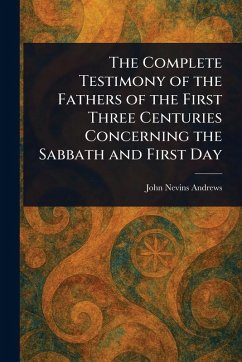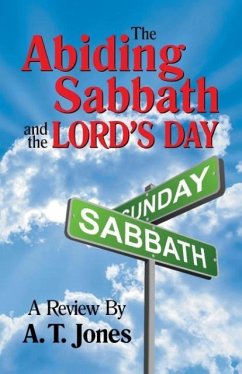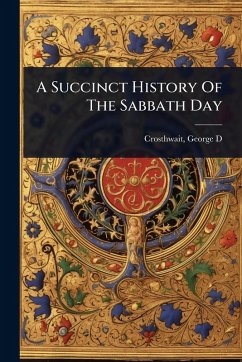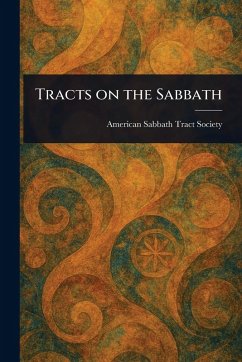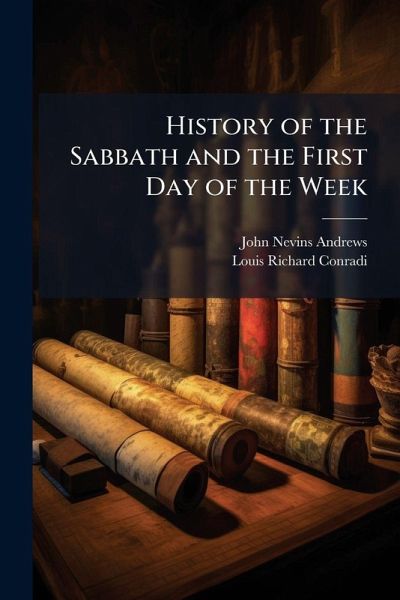
History of the Sabbath and the First Day of the Week
Versandkostenfrei!
Versandfertig in über 4 Wochen
34,99 €
inkl. MwSt.
Weitere Ausgaben:

PAYBACK Punkte
17 °P sammeln!
"History of the Sabbath and the First Day of the Week" explores the historical and theological origins of Sabbath observance and the transition to Sunday worship. Written by John Nevins Andrews and Louis Richard Conradi, this comprehensive study delves into biblical texts, historical documents, and religious traditions to provide a detailed analysis of the Sabbath's significance throughout history. The book examines the Sabbath from its creation in Genesis to its role in the Old Testament and its interpretation in the New Testament. It also investigates the emergence of Sunday as the primary d...
"History of the Sabbath and the First Day of the Week" explores the historical and theological origins of Sabbath observance and the transition to Sunday worship. Written by John Nevins Andrews and Louis Richard Conradi, this comprehensive study delves into biblical texts, historical documents, and religious traditions to provide a detailed analysis of the Sabbath's significance throughout history. The book examines the Sabbath from its creation in Genesis to its role in the Old Testament and its interpretation in the New Testament. It also investigates the emergence of Sunday as the primary day of worship within early Christian communities, tracing the influences and factors that contributed to this shift. The authors present a thorough examination of the relevant scriptures and historical evidence. This work offers valuable insights into the evolution of religious practices and beliefs surrounding the Sabbath and the first day of the week. This work has been selected by scholars as being culturally important, and is part of the knowledge base of civilization as we know it. This work was reproduced from the original artifact, and remains as true to the original work as possible. Therefore, you will see the original copyright references, library stamps (as most of these works have been housed in our most important libraries around the world), and other notations in the work. This work is in the public domain in the United States of America, and possibly other nations. Within the United States, you may freely copy and distribute this work, as no entity (individual or corporate) has a copyright on the body of the work. As a reproduction of a historical artifact, this work may contain missing or blurred pages, poor pictures, errant marks, etc. Scholars believe, and we concur, that this work is important enough to be preserved, reproduced, and made generally available to the public. We appreciate your support of the preservation process, and thank you for being an important part of keeping this knowledge alive and relevant.




